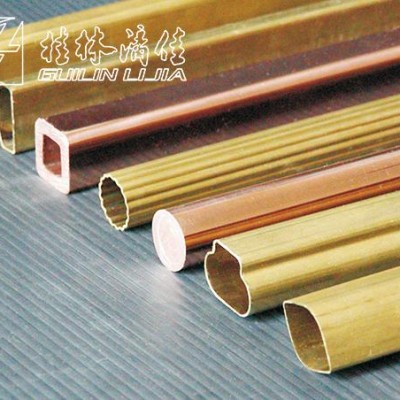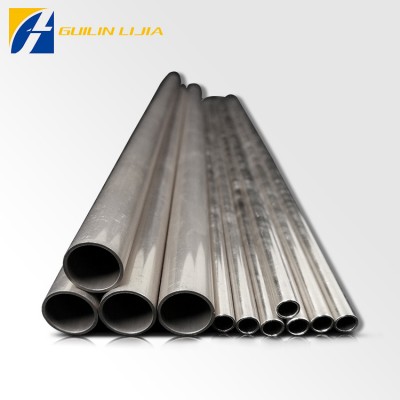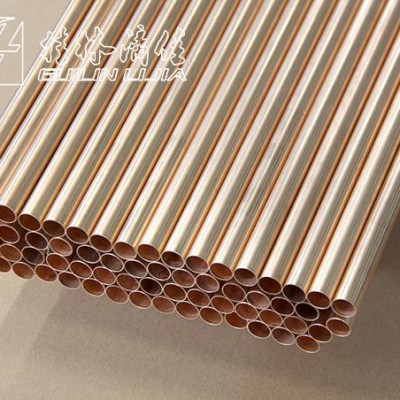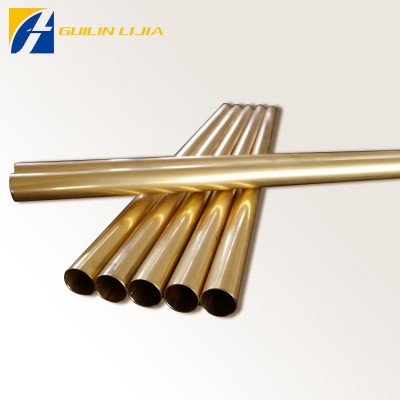Smelting technology for copper and copper alloys:
I. Basic requirements for copper and copper alloy melting equipment
A prominent problem in the smelting of copper and copper alloys is that the alloy elements are susceptible to oxidation and the alloy is liable to getter. Starting from obtaining high-quality alloy fluids with low gas content and oxidation inclusions, uniform chemical composition, and qualified, high-quality, high-yield, low-consumption production of copper and copper alloy castings and processed products and materials, the requirements for their melting equipment are: ① Conducive to the rapid melting and heating of metal charge, short melting time, less element burn-in and gettering, pure alloy liquid; ② low fuel and electrical energy consumption, high thermal efficiency and productivity, long life of crucible and furnace lining; ③ easy operation, furnace temperature Easy to adjust and control, and good labor and health conditions. Graphite copper sleeve
Second, there are many types of copper and copper alloy melting furnaces.
Each furnace has its own characteristics in terms of structure and melting process, and is used under different conditions. Therefore, when selecting a melting furnace, it must be comprehensively considered and reasonably selected from the aspects of thermal energy sources, alloy types, quality requirements, casting size, batch size, output, operating conditions and labor conditions, and must be adapted to local conditions. The most widely used in copper alloy smelting should be the core (coreless) induction furnace and the above-mentioned reflector furnace.
3. Liquid and gaseous fuel crucibles and their melting technology
Compared with solid fuel crucible furnace, this type of furnace has uniform fuel and air mixing, fast and stable burning speed, fast melting speed, meets the requirements of rapid melting, furnace temperature can be controlled, high quality alloy liquid, good working conditions, copper It can be melted with copper alloys and intermediate alloys, which is very suitable for small and medium workshops. However, the furnace temperature control of such furnaces is not as convenient as that of electric furnaces and requires a more skilled level of operation.
This type of furnace is divided into two types: fixed and tiltable. Fixed diesel crucible copper furnace with a capacity of 100kg. The nozzle sprays the wind and oil mixture into the furnace in a tangential direction, and the flame rotates around the crucible from bottom to top. The larger diameter of the lower part of the furnace allows sufficient space and time for the fuel to be fully burned and to release heat. The diameter of the furnace mouth is reduced to increase the air velocity and improve the heat transfer effect. Such furnaces require crucible lifting equipment for casting.
Inclined diesel crucible furnace with a capacity of 150kg. This furnace uses rotating handwheels, turbines, worms, and other rotating mechanisms to tilt the furnace body supported on the bracket to pour out the copper liquid within 90 ° C, shortening the auxiliary time, saving lifting equipment, and improving working conditions. The melting time of each furnace is 40 ~ 50min (the capacity of the first furnace is longer), the output of each shift can reach about 1t, and the production efficiency is high. Graphite copper sleeve manufacturers
Fourth, resistance crucible furnace and melting technology
① The resistance crucible furnace uses electric current to heat and melt the alloy through the heating element. The furnace capacity is generally 100 ~ 500kg, and the capacity of the large furnace can reach 1500kg. There are two types of electric heating elements: metal (nickel-chromium alloy or iron-chromium-aluminum alloy) and non-metal (silicon carbide). They are widely used for melting copper alloys. The advantages of this furnace are that the furnace gas is neutral, the copper liquid will not be strongly oxidized, the furnace temperature is easy to control, the operation technology is easy to master, and the labor conditions are good. ② The biggest disadvantage of this kind of furnace is the long melting time. For melting 500 ~ 600kg of copper, the first furnace needs 5 ~ 5.6h, which consumes a lot of power and has low productivity. Because copper liquid stays at high temperature for a long time, it will cause adverse consequences such as inhalation. ③ Because the crucible and furnace body tilt or cause the resistance wire to move, deform or even break, which reduces the service life of the resistance wire, it is generally made fixed. In the casting, the small castings use a portable ladle to directly extract the copper liquid from the crucible. When casting larger castings, the crucible can be lifted out for casting. In small and medium-sized workshops with small production scales, the melting, refining and modification of copper alloys are carried out in the same crucible furnace. When the production scale is large, the duplex method is often used. That is, the melting of the copper alloy is carried out in a diesel or kerosene crucible furnace with a large capacity (more than 200kg), a fast melting speed, and a furnace body that can be tilted. It is easy to control, has better working conditions, but has a slower melting speed in a resistance crucible furnace for refining, metamorphic treatment and thermal insulation.
V. Reflective Furnace and Melting Technology
Reverberatory furnaces are divided into two types: flame reflection furnaces and resistance reflection furnaces according to their energy sources. Melting technology is also divided into flame reflection furnace melting technology and resistance reflection furnace melting technology.
Six, flame reflection furnace and melting technology
① The flame reflex furnace is divided into fixed or rotary type (on request), which can be used to smelt pure copper and copper alloy. The flame reflex furnace uses high-temperature flames to radiate through the furnace roof and direct heat transfer from the flame to heat and melt the charge. Can use solid, liquid and gas as fuel, now more liquid and gas fuel. Furnace temperature can reach 1600 ~ 1700 ℃. This furnace has a large capacity, ranging from several hundred kilograms to several tens of tons, up to 120t. Mostly used for smelting of copper. ② Liquid fuel melting copper reverberatory furnace, the furnace capacity is 10t and 40t respectively. The combustion chamber and melting chamber of this furnace are together, and the oil particles atomized by the nozzle are mixed with air and burned. The high-temperature flame moves along the downwardly sloping furnace roof, sweeps through the molten pool after the front wall turns, and flows into the flue from the three rows of smoke ports opened at the lower part of the rear wall and exits the furnace. The heating and melting of metals mainly depend on the radiant heat transfer of the furnace roof and furnace wall heated to high temperature, and the radiation and convection heat transfer in the flame flow. ③ The furnace roof has high heating intensity and high temperature, and refractory brick walls with good thermal stability should be used. The advantage of the flame reflex furnace is that the furnace has a large volume and can melt large pieces of furnace material. The furnace has a large capacity and high productivity. After repairing, it can smelt about 300 times. The disadvantage is the large surface area of the molten pool. Shallow depth, the furnace gas and metal directly contact, resulting in melt oxidation, large volatilization loss, generally 3% to 6%; when solvent melting, the burning loss is smaller, which is the lower limit. There is no convection in the upper and lower layers of the metal, and the temperature and composition are not uniform, so intensive stirring measures need to be taken. The production intensity of the flame reflex furnace is large, the heat taken away by the furnace gas is large, and the heat storage loss of the furnace body is also large. In addition, the heating area of the molten pool is large, the thermal efficiency of the flame reflection furnace is low, and the dust is easy to pollute the environment. The use of mechanical blanking and agitator can reduce labor intensity; the use of a high-pressure oxygen-rich nozzle attached with a set of heat exchange devices can improve productivity and thermal efficiency.






